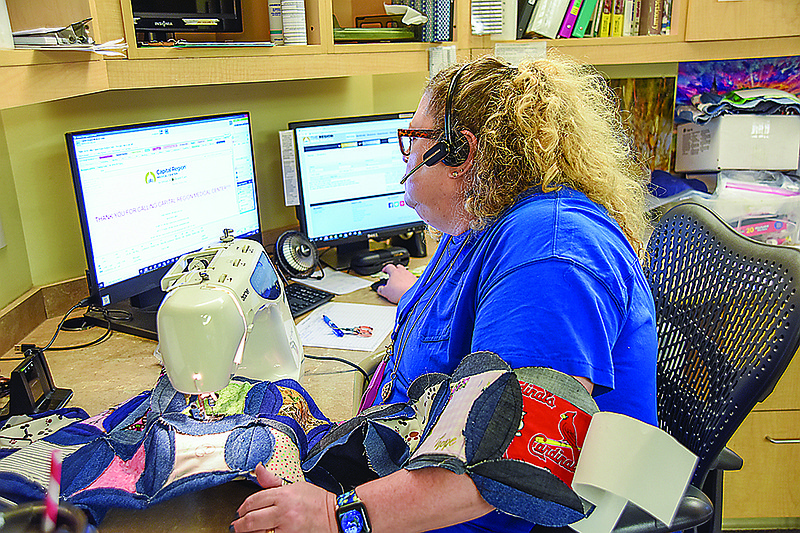During the early days of the COVID-19 pandemic, Missouri health care workers were confident they had enough personal protective equipment to withstand demand.
But, as the days wore on, PPE started becoming scarce.
Thirteen switchboard operators - working 24 hours a day inside their office at Capital Region Medical Center - watched as demand outdistanced supply of masks, said Paula Conley, manager of the switchboard team.
"There was such a shortage of PPE that we weren't able to get extra masks for visitors," Conley said. "We decided to start sewing extra masks between phone calls at the switchboard."
As of Thursday, the team had created 7,910 masks.
"My team is so phenomenal (pun intended)," she said. "The sewing - you can literally stop on a dime and answer a call."
Staff have filled every hour of their eight-hour shifts - swapping between answering phones and sewing masks.
After the masks are finished, they have to be laundered with hypo-allergenic soaps. (An operator takes the masks home and launders them herself.)
When the masks return, the operators separate them into bags to leave at entrances where visitors and patients may pick them up if they happened to forget their own.
Six sewing machines stand at the ready inside the office, Conley said Thursday.
Story continues below related video.
As Conley spoke, Pam Cain sat at her station, answering calls to the hospital. Over her left shoulder cascaded a strip of cloths sewn together for a future quilt. When she finished her phone call, Cain swung around to her left and used one of the machines to sew another patch onto the pattern.
She explained the masks leave a number of scraps.
"We hate to waste, so we're using scraps for the centers (of the pattern)," Cain said. "We're able to use those, and that (quilt) will get donated for some sort of fundraiser."
The switchboard operators said they have enough scraps for about four large quilts.
They make masks with gender-specific material patterns, and many with patterns that either gender would be comfortable wearing, Conley said.
"We started out with a tote full of fabric that somebody had donated to us," she said. "Demand just kept growing."
As demand grew, so did the operators' investment in the effort. They have received some donations, Conley said, but the operators bought most of the material themselves.
Explore Variety Store, 800 W. Buchanan St., California, donated many of the elastic bands the sewers use for the masks. Through the store, the operators were able to use stronger elastic bands than they could buy.
"There for a while, you couldn't get elastic anywhere," Cain said.

